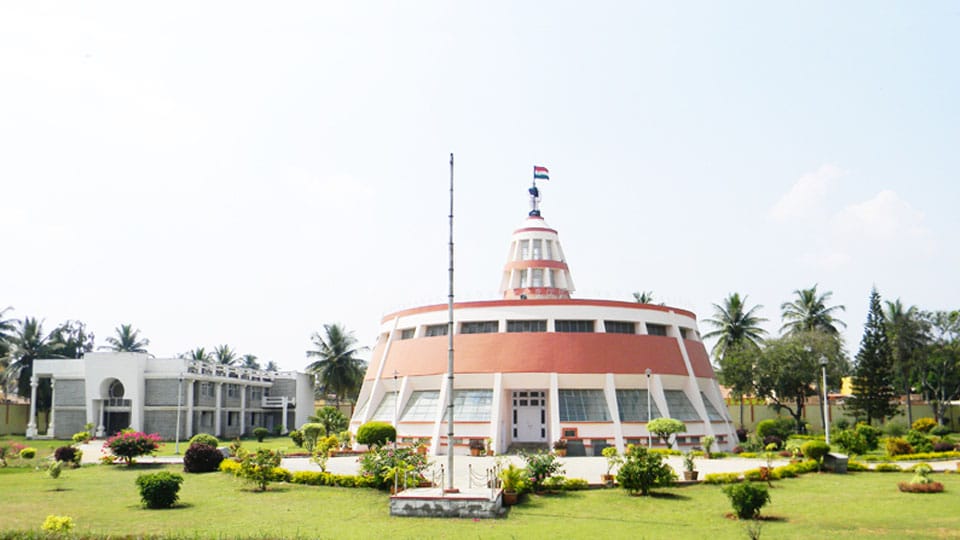By Prof. A.V. Narasimha Murthy, former Head, Department of Ancient History & Archaeology, University of Mysore
I was a child when India attained freedom from the British in 1947 and even at that age I was electrified by the joy of becoming free under the guidance of leaders like Mahatma Gandhi, Pandit Jawaharlal Nehru, Sardar Patel and a host of great savants. There was no TV then and most of us were glued to the Radio and we had a small Murphy Radio and we were all waiting for the midnight of 15th August 1947 when Pandit Nehru would unfurl the national flag and deliver his speech. I still remember those Prophetic words of Nehru when he said that when the entire world was sleeping India was awakening to freedom.
I thought of selecting a subject connected with freedom struggle in Mysuru or Karnataka. Every time I travelled from Mysuru to Bengaluru and back I used to see a monument at Shivapura near Maddur which was unique. Once I got down and went near that monument and collected some information about it and I was thrilled. Somehow the notes I had made slipped from my mind.
At that juncture, my former student Sri Siddaraju Alakere, now a faculty in PES Evening College, Mandya, gave me his book Mandya Darshana in Kannada and requested me to write a short note to be printed on the back cover. I was impressed by the content of the book, the style of writing and his commitment to research and gladly wrote a note. I have had hundreds of my students doing history and archaeology but Prof. Siddaraju is unique as he has been pursuing research and writing in addition to his teaching. The following note is based on his book.
The section on Shivapura flag hoisting Satyagraha in 1938 in the book is illuminating and shows that the enlightened citizens of that area participated in the freedom struggle.
The first conference of Mysuru Congress was conducted in 1938 at Shivapura. After this struggle, the movement for independence became stronger. H. K. Veerannagowda, a Veteran Congress leader opined that Shivapura on the highway was most suitable for the great event. The leaders of those days like Sahukar Chennaiah, H. C. Dasappa, Rangaramaih, M.N. Jois and others took the lead. Each one was allotted separate duties including food arrangements. T. Siddlingaiah was elected as the president of the Committee of Satyagraha. Many villagers showed their solidarity by contributing money. A place which can hold about 40,000 people was selected.
Realising trouble, the Mysore administration, prohibited any meeting within three miles for a month. The Satyagrahis were bent upon doing their part of the work. On 8th April 1938, Siddlingaiah was taken in procession in a bullock cart in which about 10,000 people participated. The participants proclaimed their faith in the leadership of Mahatma Gandhi. The flag was hoisted on 9th April 1938.
The agitators, among whom were M.N. Jois, K.C. Reddy, K.T. Bhashyam, Kengal Hanumanthaiah, Yashodhra Dasappa, T. Sunandamma, Subbamma Jois, Venkamma etc. They all stood in a row highly disciplined. Along with them were Sub-Division officer, Beerappa, Muthojirao Sindhia and others. Thus there was tension on both sides. M. N. Jois requested T. Siddlingaiah to hoist the flag. Siddlingaiah briefly spoke about their agitation and announced that they would violate the orders of the British District Magistrate and hoist the flag, and made a brief speech. The agitators applauded. Sunandamma rendered the national anthem Vandematharam. Siddlingaiah was arrested. M.N. Jois was arrested later and the Police took them in an honourable way and hence the agitators maintained peace and gave no scope for any ill will.
The next day also all these rituals were repeated. The same thing continued on the third day also without any hitch. All the agitators were arrested. Women agitators kept 24-hour vigil on the flag. Under instructions from the Maharaja of Mysore, all the agitators and women agitators were given full respect by the Police. This helped to maintain peace. The Flag agitation ended in the evening of 11 April 1938 peacefully.
An important decision taken on this occasion was to request the Mysuru Maharaja to grant responsible government and if it is not accepted, an agitation should be resorted till the request is accepted. As the government had prohibited any meetings and agitation, the leaders took the decision to continue the agitation for at least a month. Many were arrested but the agitators did not budge. That was the resolute attitude of the participants.
The movement at Shivapura was due to the interest of Kengal Hanumanthaiah. He entrusted this work to engineers Lakshmana and Pawar belonging to the Indo-Swiss Corporation. They prepared the blueprint for the monument. It was decided that the PWD engineers should take up this work and complete it on time. It was done by the engineers as per time-schedule and everybody felt happy over this beautiful and meaningful monument. This monument was dedicated to the public on 26th October 1979 at a function which was presided over by Kengal Hanumanthaiah. Thus it is a contribution from the public under the guidance and interest of the Mysuru Maharaja. Let us salute all persons who were responsible for the great movement.
This post was published on August 13, 2017 6:52 pm


